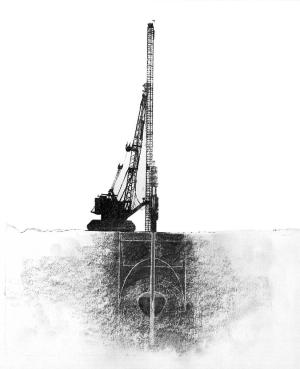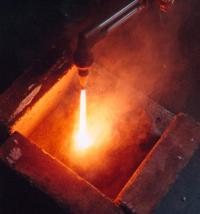|
In Situ Plasma
Vitrification
Development of the Technology
Plasma technology
is a relatively new advent that can provide extremely high temperatures
for long durations and is capable of melting any and all earthy
materials. Plasma is the fourth state of matter, comprised of partially
ionized gas, and occurs naturally as lightening on earth and as
a high energy phenomenon in galactic stars. Plasmas exist at very
high temperatures, in the range of 2000 deg C to 20,000 deg C, depending
upon the degree of ionization and level of input energy. (Paul W.
Mayne, 1996)
Paul W. Mayne
and Louis J. Circeo of the Georgia Institute of Technology have
headed up research teams to assess in situ vitrification for the
stabilization of soil materials and geoenvironmental remediation
of contaminated soils and waste. Their research has produced the
tools for making glass in situ but stops short of making anything
with the glass. We have been investigating the potential of making
architecture with these tools. An architectural strategy could extend
the process of remediation and reclamation of a site in a meaningful
way. When I speak of architecture in this way I mean the shaping
of a landscape as well as enclosed spaces.
Now that an
urgency to clean up hazardous/ toxic wastes has generated a new
set of tools, we can look at ways in which they might be appropriated
in building on clean sites as well.
|


